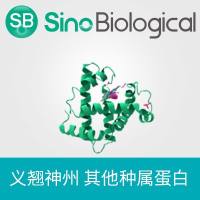Detection of Polymorphisms in the HIV-1 Coreceptor CCR5 Using Single-Strand Conformation Polymorphism
互联网
互联网
相关产品推荐

CCR5重组蛋白|Recombinant Human CCR5 Protein (VLP, Flag & His-Strep Tag)
¥4980

virE2/virE2蛋白//蛋白/Recombinant Agrobacterium tumefaciens Single-strand DNA-binding protein (virE2), partial重组蛋白
¥69

γ-氨基丁酸试剂盒,用于样本中GABA含量检测,微量法,GABA Content Detection Kit
¥358

HIV gp120重组蛋白|Recombinant HIV-1 gp120 Protein (group M, subtype CRF07_BC) (His Tag)
¥1010

CCR5重组蛋白|Recombinant Human CCR5-Detergent Protein (Flag & His-Strep Tag)
¥7770
相关问答

